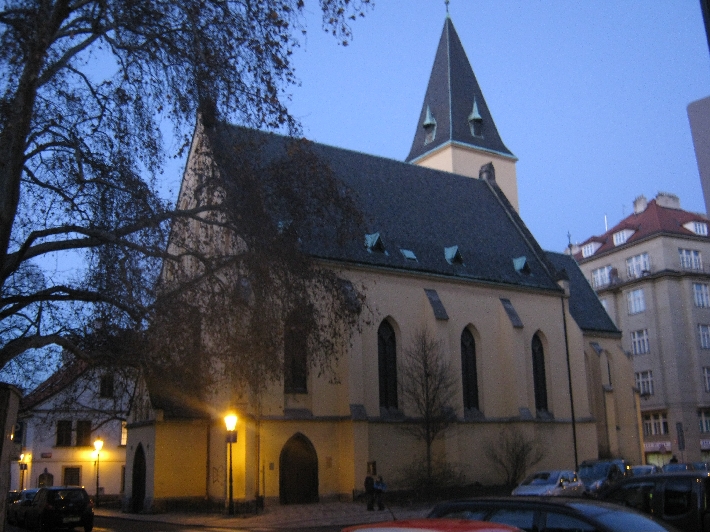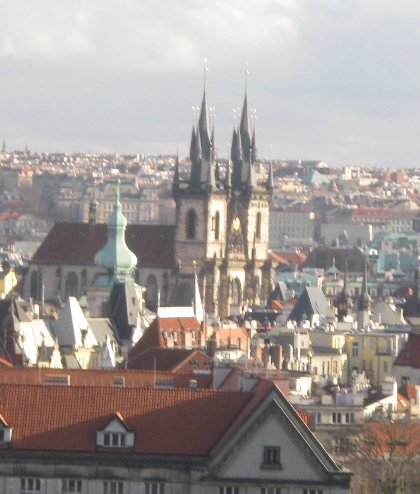
Today, 25th January, is kept in the Christian calendar as the Feast of the Conversion of St. Paul. This year, 25th January is a Sunday, and Church practice is that the readings set for a Feast Day, normally take precedence over those set for the Sunday – in this case, those set for the Third Sunday of Epiphany. So it was that this morning, we celebrated the Feast of the Conversion of St. Paul, with the account of his conversion recorded in the Acts of the Apostles chapter 9, being our first reading. And if you want to listen to my sermon from today, you can do here.
This is the second time during my time in Prague, that the the Feast of the Conversion of St. Paul has fallen on a Sunday. The previous occasion was six years ago on 25th January 2009, a few months after my arrival here in late September 2008. That service six years ago, has remained long in my memory for reasons I will explain.
Being an English-speaking congregation based at a central location in a popular tourist destination, nearly every Sunday we have visitors from across the world, joining us for worship. Frequently among the visitors, are fellow ordained priests and ministers. But because they are nearly always in mufti, unsurprisingly since they are on holiday, I only get to know of their presence when speaking to them at the Church door after the service when they usually reveal themselves 🙂
Almost without exception, they express great appreciation for the service and the pleasure for once of being able to be part of the congregation, rather than being up-front. If married, the pleasure of being able to worship sitting alongside their spouse. The latter sentiment is one Sybille and I fully concur with as it is something we both enjoy on the rare occasions we are able to do so.
However, Sunday 25th January 2009, when the Feast of the Conversion of St. Paul previously fell on a Sunday, was the occasion when I had to preach with two bishops in the congregation – Bishop Mike Klusmeyer of the Episcopal Diocese of West Virginia, and Bishop Jonathan Gledhill, the Church of England Bishop of Lichfield. The only consolation was that I did know of their presence in advance of the service, though in the case of Bishop Jonathan, only ten minutes beforehand.
But as well as being episcopally listened to and observed, the events of that day and the week that followed, were the catalyst for the beginning of this blog. The first post describing what happened, wasn’t finally published until ten days after that Sunday. But in many respects, rather than ten days hence on 4th February 2015, today is the sixth birthday of ‘Ricky Yates – An Anglican in Prague’.
Little did I know what I was starting and I now look back in staggered amazement at what has happened here, over the past six years. This is post number 304. The blog now attracts between 70 – 90 visitors a day. When there is a new post, visitor numbers promptly rise – for example on 19th January when I last published a new post here, there were 140 visitors.
I’ve met people at the Church door who have told me that they came to Church because they’ve read my blog. I’ve met a couple of people in one of our local bar-restaurants, who on discovering my name, immediately told me that they read my blog. Six years ago, not in my wildest dreams did I ever expect any of this to happen.
So on the Feast of the Conversion of St. Paul 2015, I thank God for his life, teaching and example. I also thank God for Ananias, for his faithfulness and obedience, without which, Paul’s conversion would not have happened. And I thank God for the way this blog has both become such an important component of my life and how it is appreciated and enjoyed by so many people.








